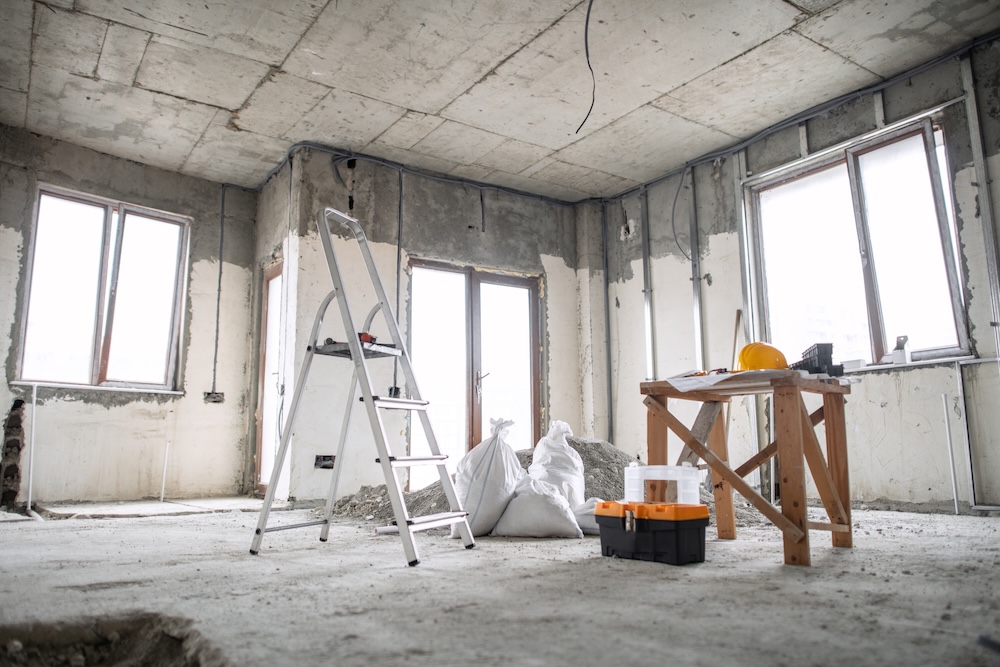Assess key elements across legal, financial, and market risk to prevent costly disruptions on this high-demand but challenging product.
Jill Duke and Keith Tibbles, Level Capital LLC
Mid-construction financing presents significant risks and opportunities for lenders, borrowers, and investors. Conducting thorough due diligence and feasibility analysis is one strategy for reducing the risks.
Due diligence is crucial to understanding project risks, ensuring legal compliance, and assessing the financial viability of a project before committing capital. Insurance and risk transfer mechanisms also provide a critical safety net for mitigating financial losses.
Without a thorough assessment, lenders and investors expose themselves to unnecessary financial and legal risks that could derail a mid-stream construction project. Due diligence involves investigating all aspects of the project to identify potential obstacles and evaluate its financial soundness.
Legal Assessments
Legal compliance is a foundational element of due diligence. Ensuring that all legal requirements are met protects lenders and investors from potential liabilities, project delays, or unforeseen financial obligations. From permit compliance to contractual obligations and regulatory oversight, verifying these legal factors early can prevent costly disputes and interruptions.
Permit and Zoning Compliance. Ensure all necessary permits are active and up to date. If any have expired, determine the process and time frame for renewal.
Contractual Obligations. Review existing contracts with general contractors, subcontractors, and suppliers. Identify any pending disputes or claims that could impact project completion. Validate that contractors’ licenses are active, if applicable.
Title Search and Liens. Conduct a thorough title search to identify any encumbrances, including tax liens or mechanic’s liens, that could complicate refinancing.
Regulatory Compliance. Changes in local and federal regulations can impact the continuation of the project. Assess how evolving legal requirements affect construction timelines and financing obligations. Investigate state and local real estate law. Explore loan default and lender remedies, such as foreclosure and receivership laws for that specific area.
Environmental and Safety Regulations. Determine whether the site complies with current environmental and occupational safety standards. Violations could cause costly delays or legal action.
Market Evaluations
Understanding local market conditions is critical for assessing the long-term success of a construction project. A misalignment between supply and demand can result in unsold inventory, price declines, or extended timeframes to secure tenants or buyers. By analyzing market trends, lenders and investors can determine whether the project is positioned for profitability or faces potential headwinds.
Market Analysis. This is typically done at the regional level. Review real estate data points, which will allow you to determine long-term trends of inventory, sales, and pricing.
Supply Dynamics. Assess the level of competition for both upcoming and newly completed projects.
Demand Dynamics. Review sales history and create an average absorption rate. This will allow for a “Months of Supply” to be calculated. This should be done for both existing and new construction to determine the risk of declining price points.
Risk of Market Saturation. Overbuilt markets may lead to reduced property values and lower rental rates, ultimately impacting the investments potential return.
Long-Term Viability. Consider geographical projections such as large employers moving into or out of the area that may impact demand for the finished property.
Economic Conditions. Analyze economic indicators such as employment rates, labor force shifts, and interest rates.
Demographics. This is one of the most overlooked data series when it comes to funding a new project: Who are the buyers or renters? Are they in the area of the subject site and does the product match the needs of the demographic?
Physical Inspections and Engineering Assessments
A physical review of the construction project ensures the structural integrity and quality of work align with industry standards and project specifications. Unexpected deficiencies or poor workmanship can lead to budget overruns, extended timelines, or project failure. Conducting a comprehensive engineering assessment reduces these risks and ensures the project remains on track.
Structural Integrity. Conduct engineering inspections to assess the quality of completed work and identify any defects that need rectification.
Environmental Compliance. Ensure compliance with local and federal environmental regulations to avoid costly legal repercussions.
Material and Workmanship Evaluation. Verify that the materials used so far meet quality standards and that construction methods are consistent with project plans.
Inspection of Utilities and Infrastructure. Ensure that water, electricity, gas, and sewage systems meet project specifications and regulations.
Quality of Previous Construction Work. Examine construction progress to ensure previous work was completed to industry standards.
Financial Analysis
A strong financial foundation is crucial for any mid-construction project. Lenders and investors need to assess cost projections, revenue expectations, and the overall financial stability of the borrower. Without a proper financial analysis, unexpected costs or cash flow disruptions could derail the project before completion.
Cost-to-Complete Projections. Use updated cost estimates to determine the funds needed to finish the project.
Revenue Projections. Evaluate anticipated rental or sales revenue against market rates to ensure financial viability.
Cash-Flow Analysis. Ensure that financing solutions align with the borrower’s ability to service debt while maintaining adequate liquidity.
Contingency Fund Planning. Establish a financial buffer for unforeseen costs or project overruns.
Assessment of Borrower Financial Stability. Analyze the borrower’s financial position, creditworthiness, and repayment ability.
Insurance
Securing appropriate insurance coverage is essential to protect lenders and investors from unforeseen losses. Specialized insurance policies provide financial protection against construction delays, property damage, and liability risks.
Builder’s Risk Insurance. Builder’s risk insurance is one of the most critical policies for midconstruction financing. It provides coverage for damage to construction projects due to fire, theft, vandalism, and natural disasters. Validate that insurance premiums are paid in full up front and monitor those policies throughout the project time frame.
Make sure coverage includes buildings under construction, materials, fixtures, and temporary structures. Further, ensure the policy covers the full construction period, including any anticipated delays. Understand the policy’s limitations, such as exclusions for design defects or contractor negligence. Finally, policies may need adjustments for partially completed structures, ensuring adequate protection.
Liability and Performance Bonds. Even with proper due diligence, construction projects can face unexpected issues. Liability insurance and performance bonds provide essential protection against these risks by ensuring financial recourse for lenders and investors. These measures help mitigate losses and prevent disruptions that could derail project completion.
General liability insurance covers legal costs arising from accidents, injuries, or property damage caused by construction activities. Performance bonds ensure contractors complete their work as agreed, providing financial recourse if they default. Subcontractor default insurance protects against financial losses if a subcontractor fails to meet contractual obligations. Payment bonds guarantee subcontractors and suppliers are paid, reducing the risk of construction stoppages due to nonpayment disputes. Completion guarantees protect investors and lenders by ensuring the project will be completed, even if the contractor fails.
Professional Liability Insurance. Errors and miscalculations in design and engineering can lead to costly delays, structural issues, and legal disputes. Professional liability insurance protects against damages caused by design flaws or negligent project management. By ensuring coverage for architectural and engineering work, lenders and investors can mitigate risks associated with professional errors.
Coverage for design defects protects against damage resulting from errors in architectural or engineering work. Legal protection provides financial coverage for lawsuits arising from design flaws. Consultant liability protection covers mistakes made by architects, engineers, or project managers.
Business Interruption Insurance. Construction delays can significantly impact a project’s financial viability. Business interruption insurance provides crucial protection against income loss due to construction stoppages, helping borrowers and lenders maintain financial stability. This type of insurance ensures that fixed operational costs, such as loan payments and salaries, are covered during unexpected disruptions.
For example, revenue protection covers lost revenue if construction halts due to covered events. Operational cost coverage helps cover fixed costs such as loan payments, salaries, and taxes during disruptions. Some policies offer extended coverage beyond construction delays, protecting against loss of revenue post-completion.
Risk Mitigation Strategies
Beyond due diligence and insurance, lenders and investors can take additional proactive steps to reduce risks associated with mid-construction refinancing. Working with experienced developers and contractors, for example, ensures the project team has a successful track record with similar projects.
Additional tools include leveraging AI-powered risk analysis tools to predict financial risks and track project progress, setting up regular progress audits that include frequent site visits and financial reviews, establishing contingency funds to manage unforeseen expenses and ensure project completion, and using performance-based financing which ties release of funds to achieving project milestones.
Conducting thorough due diligence and feasibility analysis ensures that lenders and investors make informed decisions when refinancing mid-construction projects. By assessing legal compliance, financial, and market factors up front, stakeholders can identify potential risks and develop strategies to mitigate them.
Additionally, securing the right insurance coverage provides a financial safety net, reducing exposure to unforeseen liabilities. These proactive measures enhance the likelihood of project success while safeguarding investments. As construction financing becomes increasingly complex, leveraging technology and industry best practices will be an essential component for navigating mid-construction refinancing successfully.








Leave A Comment